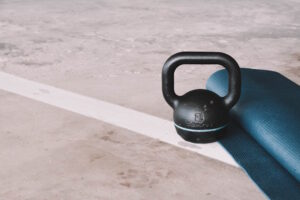
Pilates, the renowned exercise method developed by Joseph Pilates, has seen the evolution of its equipment over the years. From its humble beginnings to modern innovations, Pilates equipment has undergone changes to enhance the practice and offer a wider range of exercises. In this article, we will explore the difference between classical and modern Pilates, delve into the evolution of Pilates equipment, discuss the creation and history of Pilates, and highlight the history of the Pilates Reformer machine.
What is the difference between classical and modern Pilates? Classical Pilates refers to the original method developed by Joseph Pilates himself. It follows the principles and exercises created by him, with minimal modifications. Classical Pilates adheres strictly to the original repertoire and sequencing, focusing on the precise execution of movements and maintaining the integrity of the method. On the other hand, modern Pilates encompasses various adaptations and interpretations of the original method. While still rooted in the fundamental principles, modern Pilates may incorporate contemporary modifications, additional exercises, and variations to cater to different fitness levels and individual needs. The goal of both classical and modern Pilates remains the same: to improve strength, flexibility, and body awareness.
How did Pilates evolve? The evolution of Pilates can be attributed to the development and refinement of the method by Joseph Pilates and subsequent practitioners and instructors. Joseph Pilates began developing his method in the early 20th century, initially using bedsprings and other makeshift apparatus to support and challenge the body during exercise. Over time, he created specialized equipment like the Pilates reformer, Cadillac, and chairs to further enhance the practice. After Joseph Pilates’ passing, his students and disciples continued to promote and teach the method, adapting it to suit the needs of their clients and introducing modifications based on their own experiences. This continuous evolution and exploration of Pilates principles have led to the diverse interpretations and variations of the method that exist today.
What is the creation and history of Pilates? Pilates was created by Joseph Pilates, a German-born physical trainer, and his wife Clara. Joseph Pilates initially developed the method during World War I as a way to rehabilitate wounded soldiers. He drew inspiration from various disciplines, including gymnastics, yoga, martial arts, and dance, to create a holistic exercise system that focused on core strength, flexibility, and body alignment. In the 1920s, Joseph Pilates emigrated to the United States, where he opened a studio in New York City and introduced his method to dancers, athletes, and individuals seeking a unique approach to physical fitness. The Pilates method gained popularity over the years, and Joseph Pilates’ teachings were passed down to future generations through his students and instructors.
What is the history of the Pilates Reformer machine? The Pilates Reformer machine, one of the most iconic pieces of Pilates equipment, has an intriguing history. Joseph Pilates originally designed the reformer using a bed frame and springs, creating a versatile apparatus that provided resistance and support for a wide range of exercises. The reformer allowed for fluid movements and precise control, emphasizing core strength and proper alignment. As the popularity of Pilates grew, the reformer underwent modifications and refinements by subsequent practitioners and equipment manufacturers. Today, there are various types of reformers available, including traditional wooden designs and contemporary models with added features such as adjustable footbars, jump boards, and tower attachments. These modern innovations provide greater versatility and options for customization, further expanding the possibilities of Pilates practice.
In summary, Pilates equipment has evolved from its traditional roots to incorporate modern innovations, while still maintaining the core principles of the method. Classical Pilates adheres closely to the original repertoire and sequencing, while modern Pilates offers adaptations and variations to suit individual needs. The evolution of Pilates can be attributed to the continuous refinement and exploration of the method by Joseph Pilates and subsequent practitioners. The creation and history of Pilates trace back to Joseph Pilates’ development of the method, his emigration to the United States, and the subsequent growth and dissemination of Pilates teachings. The Pilates Reformer machine has a rich history, with Joseph Pilates’ original design undergoing modifications and advancements to offer greater versatility and options for practitioners. The evolution of Pilates equipment showcases the ongoing innovation and dedication to enhancing the practice and benefiting individuals in their pursuit of strength, flexibility, and body awareness.